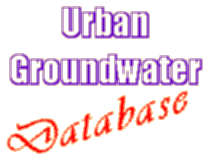 |
 |
Town/City: |
Hyderabad |
State/Province: |
Andhra Pradesh |
Country: |
India |
Latitude/Longitude: |
78E 17N |
Information supplied byK. Subrahmanyampostmas@csngri.ren.nic.in+91 40 671 564 Dated Tue Aug 6 13:58:57 1996 |
|
 |
 |
Town/City: |
Hyderabad |
State/Province: |
Andhra Pradesh |
Country: |
India |
Latitude/Longitude: |
78E 17N |
Information supplied byK. Subrahmanyampostmas@csngri.ren.nic.in+91 40 671 564 Dated Tue Aug 6 13:58:57 1996 |
|
Character: The area exhibits undulating topography with number of tanks and hill ranges. The elevation ranging between 500 to 600 m amsl. While Banjara, Jubilee, Golconda, Nawabat Pahad, Tirumalagiri and Moula Ali are prominent hill ranges, Hussain Sagar and Mir Alam are prominent tanks located within the city. Hussain Sagar located in the heart of the city bifurcates it into Secunderabad and Hyderabad. Musi river passing through the middle of Hyderabad city flows in an easterly direction. Hyderabad is the capital of Andhra Pradesh State and is a fast developing industrial city.
Growth rate: 9.5%
Culture: A cosmopolitan city with people of different religions and cultures.
Industry: Industrialised urban area with a number of chemical, chemical, pharmaceutical, electrical and electronic industries.
Land use: Urban 93% [including industrial]; Agriculture 1.7%; water spread 5.3%.
Type of climate: Semi-arid.
Seasons: Winter, Summer and Monsoon.
Annual rainfall: 778 mm.
Evaporation: 2,700 mm/pa (ranging between 1970 to 4300 mm.)
Basic Hydrogeology: Pink and grey granites and granite gneisses of Archaean age, intruded at places by dolerite dykes, pegmatite and quartz veins.
Aquifer type: A 15-20m thick weathered zone is formed out of physical, chemical, in situ weathering of hard rocks (devoid of primary porosity). In this weathered zone, large diameter open wells are constructed to meet the domestic and irrigation needs. But due to urbanization and manyfold increase in draft, the weathered zone has become dry at several places. Presently, groundwater is being tapped from the fractured zone from depths of 40-60 m.
Total annual dynamic recharge: 51.50 MCM
Total annual draft: 42.00 MCM
Groundwater quality: Potable to bad in some localities due to pollution from industrial, human and animal intervention.
Roles of surface and groundwater: Surface water reservoirs contribute 75.00 MGD and groundwater through wells contribute 25.00 MGD.
Quantities for domestic and industry: 100 MGD water used for domestic consumption against 160 MGD [Govt. of India standards]. By 2016 AD the domestic requirement would be about 640 MGD based on projected population of 17.6 millions.
Point and Diffuse Sources:
1. Increasing urbanisation demands for housing have indiscriminately spoiled the lakes and are being converted to form large residential complexes converting them into concrete jungles. Thus, the need for large groundwater supplies has enhanced many fold. Indiscriminate sinking of borewells and over exploitation of the aquifers has resulted in serious decline of water levels.
2. Effluents from chemical and pharmaceutical industries like Indian Drugs and Pharmaceuticals Limited and other small scale industries spread through out the city, urban wastes are polluting the surface as well as subsurface waters.
1. The rapid urbanisation and further concentration of industrial activity within the city limits are to be controlled.
2. Treatment of industrial effluents and diversion of industrial, human and domestic wastes to the peripheral areas of the city, so as to protect the increasing pollution of the lakes within the city and the consequent groundwater pollution.
3. Conservation of rainfall through roof top collec- tions and runoff accumulation.
4. Conversion of surface water bodies numbering about 160 with a water spread area of 23 sq km into plots for houses is to be prevented and protected for ecological balance and to improve.
5. Control on indiscriminate drilling of deep borewells and limit over draft.
6. By 2016 AD the water consumption would be around 640.00 MGD. The capacity of the existing sources is only around 100 MGD creating a short fall of about 540 MGD. There is no source in the area which can supply 540 MGD except river Krishna/ Godavari and hence surface water project is to be contemplated and executed.
not provided
Information provided by :
Dr. P. Babu Rao,
Director
Andhra Pradesh State Groundwater Department
B Block, 7th & 8th floor
BRKR Govt. Offices Building
Hyderabad - 500 029
Phone : (O) 00-91-40-241671-74
(R) 00-91-40-291574
Dr. K. Subrahmanyam
Scientist
National Geophysical Research Institute
Uppal road, Hyderabad - 500 007
Phone : (O) 00-91-40-670141 - Ext : 240
(R) 00-91-40-3325718